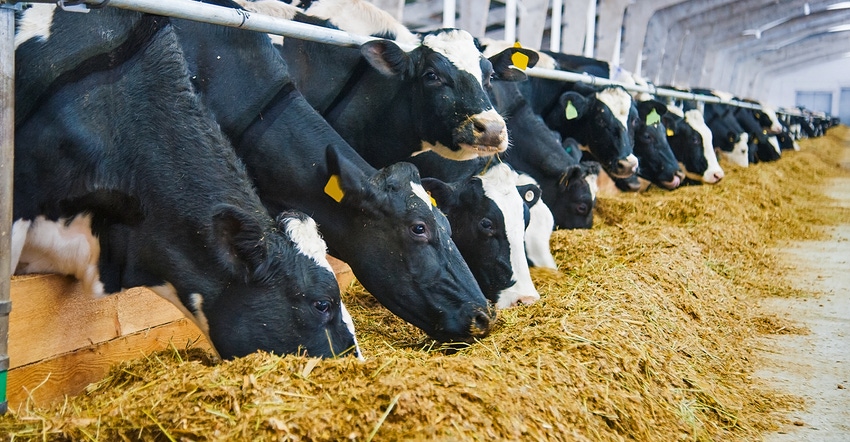
Milk prices typically drop in January following the holidays, and this year was no exception, according to Bob Cropp, University of Wisconsin-Madison dairy economist. Milk prices during the last quarter of 2019 had improved significantly from earlier in the year. Class III prices hit a high of $20.45 in November and declined to $19.37 in December but averaged $16.96 for the year — $2.35 higher than the 2018 average of $14.61.
“But it looks like Class III for January will be more than $2 lower than December, around $17, due to much lower cheese prices,” Cropp says.
The big question is, where are milk prices headed for the rest of the year?
Higher milk prices
“Milk prices are so sensitive to relatively small changes in milk production, milk and dairy product sales, and dairy exports,” Cropp explains. “As of now, these factors all appear positive for milk prices to average higher for the year than 2019.”
Milk production for December was 0.7% higher than a year ago, the net result of 0.1% fewer cows and 0.8% more milk per cow. For the year, cow numbers averaged 67,000 fewer, or down 0.7%. Milk per cow averaged 1.1% higher, netting an increase in production of just 0.3%.
USDA is forecasting 2020 milk production to be 1.7% higher than in 2019, the result of an average of 5,000 more cows and 1.7% more milk per cow.
“Dairy farmers lost a lot of equity from very low milk prices from all of 2015 until the last half of 2019,” Cropp says. “Dairy farmers will need to recover from this before we see much dairy herd expansion. So, USDA’s forecast for the number of cows seems reasonable, but I question the increase in milk per cow. The very wet crop year in 2019 resulted in lower-quality hay, haylage and corn silage, which is bound to impact milk per cow. We may see the increase in milk per cow closer to 1.3% to 1.4%, which would be more positive for milk prices.”
Cropp notes that the economy continues to grow, unemployment is low and wages have increased, which indicates positive milk sales.
“Fluid [beverage] milk sales will likely continue the downward trend, but this should be more than offset by higher cheese sales,” he says.
There are positive signs pointing to higher dairy exports in 2020, particularly nonfat dry milk/skim milk powder, cheese and whey products, according to Cropp.
“While it takes time for the full effects of trade agreements to be realized, 2020 exports may get some help from the recently signed U.S.-Mexico-Canada Agreement, phase one China agreement and a phase one Japanese trade agreement,” Cropp says. “But a major factor for higher exports is an expected growth in world milk production of less than 1%. Milk production among the major dairy exporters — the European Union, New Zealand, Australia and Argentina — are forecast to be up 1% or less, and in the case of Australia, lower. This will open up opportunities for U.S. dairy exports.”
U.S. dairy product prices have been higher than world prices, but world prices are strengthening, which will help make U.S. products more competitive.
Also positive for higher milk prices are dairy stocks. American cheese stocks increased some from November to December but were 7.1% lower than a year ago. The stocks of other cheese varieties were 6.5% higher, but total cheese stocks were still 2.2% lower, Cropp notes. Butter stocks, however, grew by 5.2% from November to December, with December stocks 5.9% higher than a year ago, which means butter prices could be heading lower.
“As of now, I could see the first-quarter Class III milk price averaging around $17.55; second quarter, $17.65; third quarter, $18.35; and fourth quarter, $18.95, for an average of $18.15 to $18.40 for the year — or about $1.20 to $1.30 higher than 2019,” Cropp predicts. He believes butter prices could go above $2 per pound the second half of the year.
A couple of potential clouds on the horizon are slower-growing U.S. and world economies.
“China is facing its worst GDP growth in 30 years, and European economies are showing slow growth. Current Class III futures are fairly optimistic for 2020,” Cropp says. “Dairy farmers may want to consider protecting some of their milk with dairy futures and options or the Revenue Protection option.”
About the Author(s)
You May Also Like






